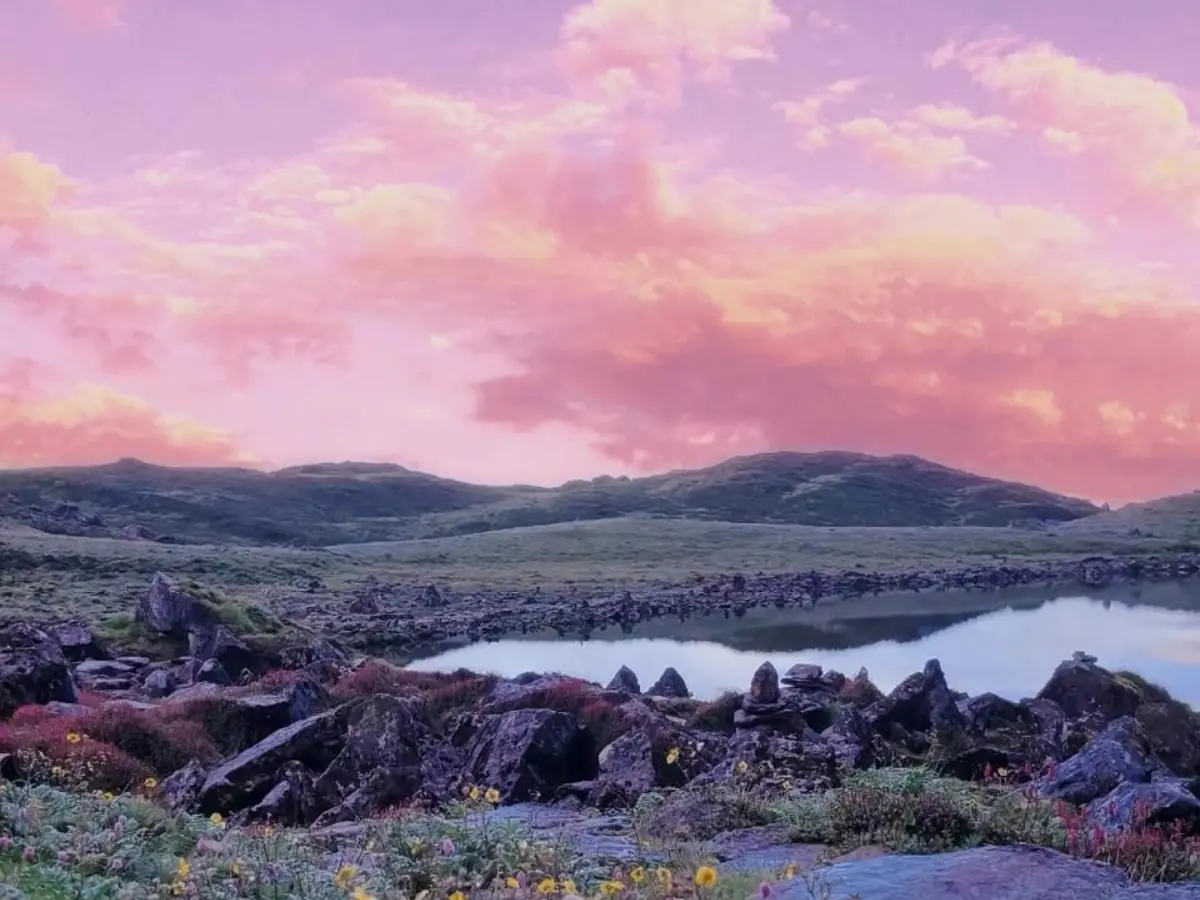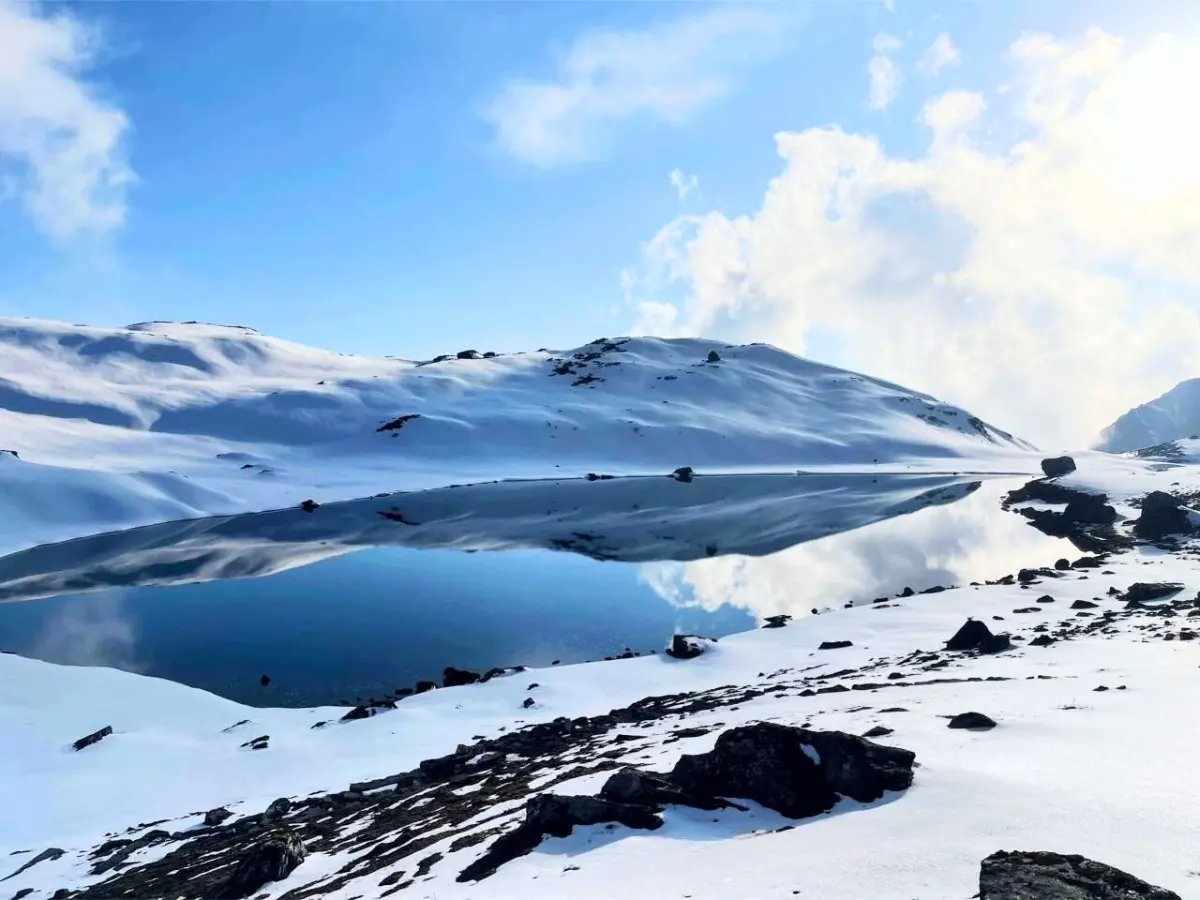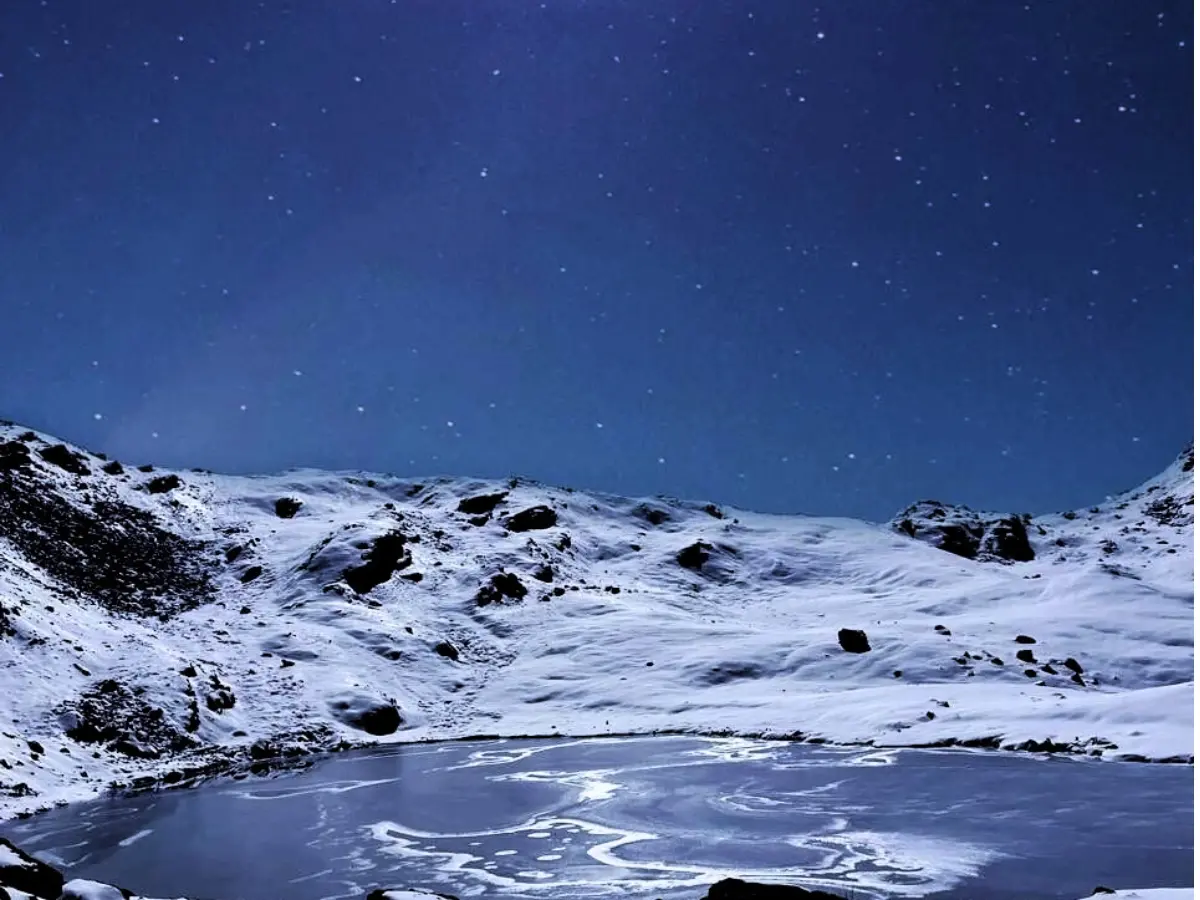Panch Pokhari Trekking is one of the wilderness and newly opened non-tourist trekking route in Nepal which is named by five holy ponds and Hindus pilgrimage. Panch Pokhari is situated at an elevation of about 4100m above sea level. Panch pokhari (five lake) trekking offers beautiful Himalayan view including the Gauri Shanker, Dorje Lakpa, Langtang Himalaya range, Jugal Himalayan range, Rolwaling Himalayan range, Tibetan Himalayan range etc and pristine nature with district culture . There are few villages and no hotels on this route. Panch pokhari mean 5 holy ponds and Hindus religiously respect the place. Panch pokhari trek begins from Chautara after drive 5-6 hours from Kathmandu. You will experience the lifestyle and culture of Sherpa and Tamang people. Lots of historical places, Caves & naturally beautiful lakes are the most outstanding and highlighted part of Panch Pokhari trekking.
Panch Pokhari Trek
- Duration 11 Days
- Trip GradeModerate
- Country Nepal
- Maximum Altitude 4350m
- Group Size 1-20
- Starts Kathmandu
- Ends Kathmandu
- Activities Trekking and Hiking
Panch Pokhari Trek Itinerary
Cost Details
Includes
- Bus tickets ( KTM-Chautara)
- Hotel accommodations in Kathmandu
- City tour by private transport
- Transportation City –airport-city
- Langtang National Park permit
- TIMS Permits
- Tented trek
- Trekking equipment such as down filled sleeping bag and duffel bag.
- An English-speaking Govt. registered trekking guide
- Local porters to carry luggage (2 trekkers : 1 porter)
- Guide and porter salaries, insurance, equipment, transport, food and lodging
- 3 Meals (Breakfast, Lunch and Dinner) along the way to trek
- Purified/Iodine Drinking water
- All tent accommodations on twin sharing basis
- A comprehensive first aid medical kit
Excludes
- City entrance fees in Kathmandu city
- Tour guide
- Food in Kathmandu
- Boiled / bottled water
- Hot shower
- Net / Wi-Fi charges
- Electronic device recharge
- Drinks
- Personal expenses
- Travel insurance and evacuation charges
- Tips
Dates and Availability
- Our Panch Pokhari Trek is flexible. You can customize it as per your interests and budget.
- 100% fixed departure unless unseen events like natural disasters, bad weather, or political issues disrupt the trip.
- Private trek service available.
- All ages of travelers can do the Panch Pokhari Trek with us.
- By booking the Panch Pokhari Trek with us, you are agreeing to be bound by our Terms & Conditions.
Equipments
Follow the below packing list to pack:
- Trekking gear
- Duffel bag
- Daypack
- Sleeping bag with liner
- Trekking poles
- Water bladder
- Map
Clothes:
- Breathable undergarments
- Trekking t-shirt and pants
- Thermal layers
- Down jacket
- Fleece
- Windproof/waterproof jacket and pant
Accessories:
- Trekking boots
- Liner socks
- Fuzzy socks
- Gloves (touch screen compatible)
- Scarves
- Beanie
- A casual pair of shoes to wear in lodges
Toiletries:
- SPF
- Wet tissues
- Lip balm
- Moisturizer
- Deodorant
- Handwash
- Shampoo
- Small mirror
- Comb
- Toothpaste and toothbrush
- Toilet paper
Miscellaneous:
- Reusable water bottle
- Water purification tablets
- UV sunglasses
- Camera
- Mobile
- Power bank
- Spare batteries
- Universal charger
- Snacks
- Book
- Journal and pen
- Travelers game for time pass
Essential Information
Overview of the Panch Pokhari Trek
Panch Pokhari, which translates to" Five Lakes," is a sacred and scenic trekking destination located in the Sindhupalchok quarter of Nepal. Sitting at an altitude of about 4,100 measures, these five alpine lakes are deified by both Hindus and Buddhists. The journey offers stunning views of the Langtang, Jugal, and Rolwaling mountain ranges, along with a serene and spiritual atmosphere. It's lower crowded compared to popular trekking routes, making it ideal for those seeking solitariness and off- the- beaten- path adventures.
Stylish Time to Trek
The stylish times to visit Panch Pokhari are spring( March – May) and afterlife( September – November). During these seasons, the skies are generally clear, and the mountain views are spectacular. Spring brings vibrant wildflowers and rhododendron blooms, while afterlife offers crisp, dry rainfall perfect for touring. Winter is also possible but can be cold and snowy at advanced mound. Thunderstorm season( June – August) makes the trails slippery and bloodsucker-prone, though the region looks lush and green.
Cultural and Spiritual Highlights
Panch Pokhari is an important passage point, especially during Janai Purnima( July/ August), when thousands of addicts journey to the lakes to offer prayers and take holy dips. Along the trail, you’ll hassle Tamang, Sherpa, and Chhetri communities, each with their unique traditions and hospitality. The journey passes through fascinating townlets, terraced spreads, cloisters, and Buddhist stupas. The emulsion of natural beauty and artistic uproariousness makes this journey a deeply enriching experience.
Accommodation and Food
Unlike marketable trekking routes, the Panch Pokhari journey has limited teahouse installations. In some sections, you may need to chamber or calculate on homestays with introductory amenities. Food options generally include traditional Nepali refections like dal bhat, polls, mists, potatoes, and seasonal vegetables. Due to its remote nature, it's judicious to journey with a companion or organized group to insure proper accommodation and mess arrangements. Carrying some snacks and a applicable water bottle with sanctification tablets is largely recommended.
Permits and Availability
To journey in Panch Pokhari, you need a Langtang National Park Entry Permit and a TIMS( Pedestrians’ Information Management System) card, which can be attained in Kathmandu. The journey generally starts with a drive from Kathmandu to Chautara( 5 – 6 hours), followed by a journey through different geographies including rhododendron timbers, alpine meadows, and rocky trails leading to the lakes.
Difficulty and Trekking Experience
The Panch Pokhari journey is moderate to grueling , depending on your diary and physical fitness. The trail includes several ascents and descents, and since installations are limited, it's less comfortable compared to other popular journeys. still, the price is the pristine beauty and the peaceful air of the lakes and girding mountains. Proper adaptation is important as the journey reaches above 4,000 m.


